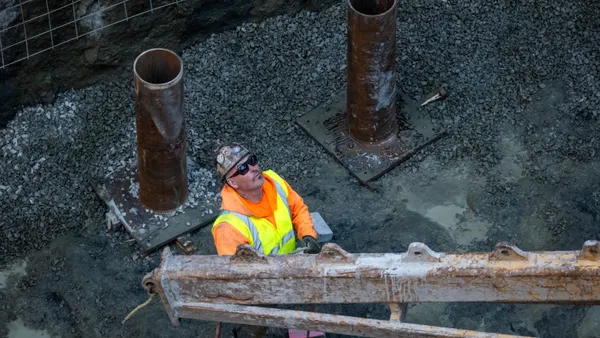OXON HILL, Maryland—Wall Street’s swings throughout October have left many worried that an economic downturn may be coming sooner than later, but the risks that are spooking investors — threats of a full-blown trade war or a misstep by the Federal Reserve, for example — are being offset by a lot of positive signs, said Cristian deRitis, senior director of Moody’s Analytics, at Dodge Data & Analytics’ 80th annual Outlook Executive Conference last week.
President Donald Trump’s Tax Cuts and Jobs Act, which went into effect last December, can be traced to much of the recent growth in employment, wages, corporate investment and consumer spending, he said. While the effects of this stimulus are tapering off, the deficit finance spending bill that was passed earlier this year is still a lingering tailwind “that’s going to push the economy forward for at least the next nine months,” deRitis said. “And if we make it nine months, then this expansion will be the longest expansion in U.S. history,” at more than 10 years.
There’s an old wives’ tale out there along the lines of “what goes up must come down,” but deRitis asserted: “There’s no reason mathematically or based on economic theory to suggest that just because we’ve expanded for 10 years and we set a record, we must go into contraction.” The Netherlands saw a more than 20-year expansion, Australia’s expansion is still going strong 26 years in, and Japan holds the record for its 33-year expansion, he noted.
Economic risks
That said, the longer an economy expands, the more exposed it is to risk, deRitis said. Among the most pressing risks are shortages in labor, in housing in many markets and in trucking supply chains. “It’s a great problem to have in the sense that there’s so much demand out there that we just don’t have the inputs to meet it all, but … if we don’t address these issues, the economy just can’t grow as quickly as we might like.”
At the same time, interest rates are trending up and government spending is at record levels, so it’s not clear whether the Federal Reserve and Congress would be able to provide support if the economy were to stumble, deRitis added.
Several long-term trends are present, though unlikely to cause the next recession, according to Moody’s analysis, and these include income inequality, low infrastructure funding and “rocky” state finances. Inadequate infrastructure investment, in particular, is a direct threat to both GDP growth and productivity growth, deRitis said. Even if Republicans hold on to the House of Representatives in the midterm elections, it’s uncertain whether the Trump administration has the wherewithal to enact a sweeping infrastructure program, because massive tax cuts and fiscal spending sapped many resources.
So what is most likely to tip the U.S. into the next recession? A few red flags, according to deRitis, include:
- Soaring government debt.
- Rising household debt (but not to the extent that caused the 2007-2008 financial crisis).
- Corporate debt.
Moody’s is most concerned about the last of these three, because nonfinancial corporations took on a lot of risk when interest rates were low, and once rates start to tick up these bets “are not going to pay off” for weaker companies.
Contrary to what one would expect, the low unemployment rate is “flashing red” as an indication of impending recession, deRitis said, because economic contractions tend to come about three years after a rate is hovering around 4.5%.
Doomsday ahead?
So when will recession strike?
"June 20, 2020, at 2 p.m.," deRitis joked. While Moody’s can’t predict recession to the day or hour, the second or third quarter of 2020 is the most likely timeframe, but “there’s a lot of uncertainty here,” he added. This prediction is consistent with Moody’s data and models, according to deRitis, but unexpected acceleration or deceleration is always possible and revisions may later be needed.
The good news is that the impending recession will be nothing like the Great Recession of 2007. “We’re viewing this as more of a garden-variety type of recession,” the economist said, “not a repeat of the great financial crisis that we just experienced,” nor a depression. One of the main reasons for this is that the U.S. hasn’t fully recovered from the last one, he added, and this is especially apparent in the still-floundering levels of housing starts.
The coming downturn could be viewed a bit like growing pains, where a near-10-year expansion has caused “imbalances in the economy, particularly around corporate debt, that need to be worked out,” deRitis said. “We have to restructure, there will be defaults of certain businesses, and then after that, we’re off running again," he said. “It’s maybe three or four quarters of recession, then we’re back on the growth path."












